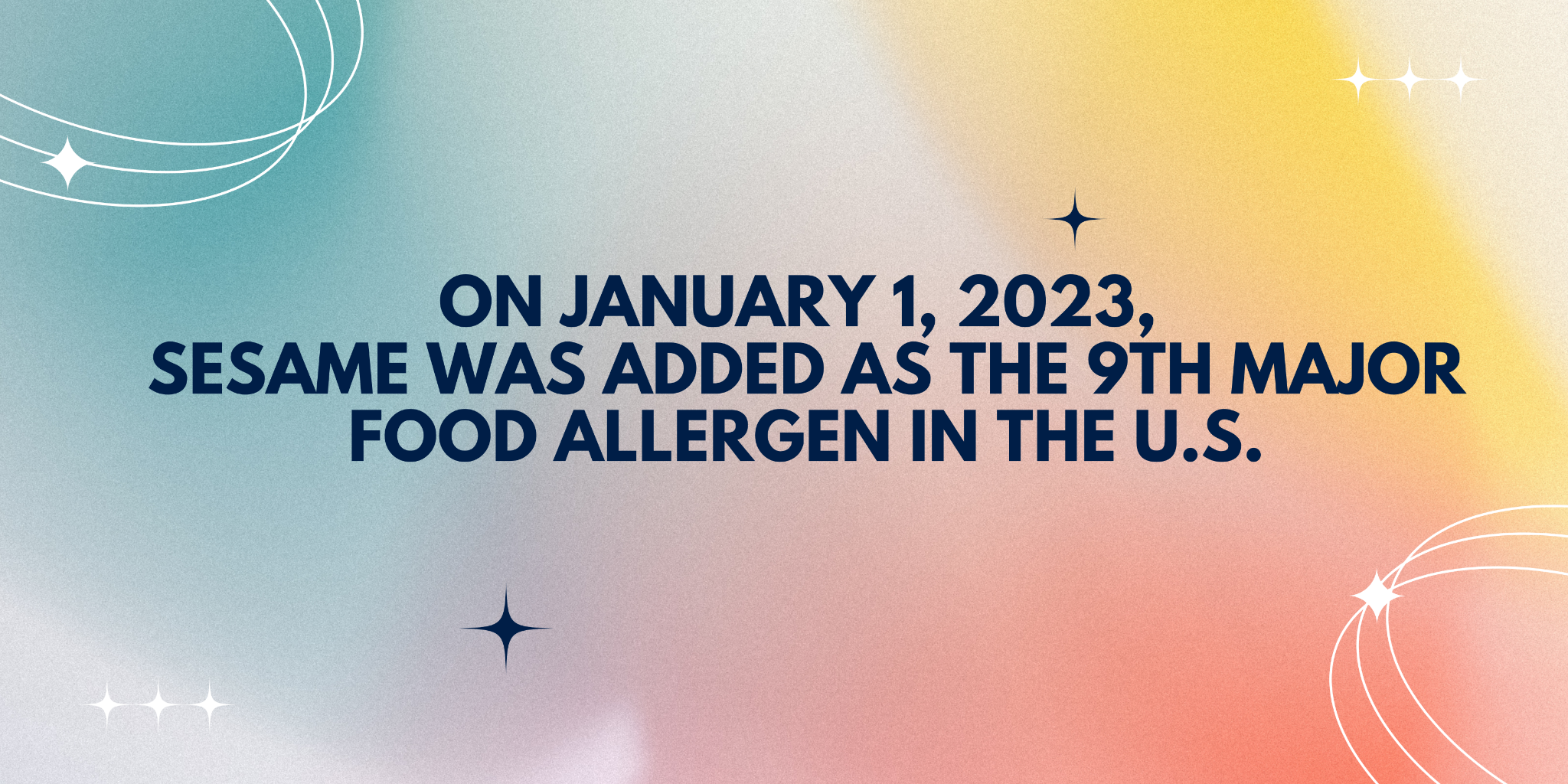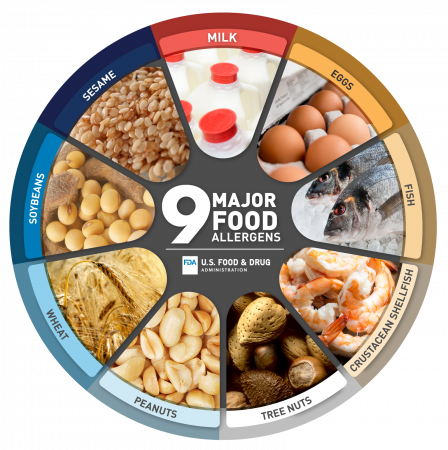17 3.6: Allergens
3.6 ALLERGENS
Allergic reactions to food and food hypersensitivities are becoming more prevalent. An allergy occurs when the body’s immune system does not recognize a protein in food and tries to fight it off. This can manifest itself in many ways, from severe, life-threatening reactions to very minor reactions such as a cough or a rash. Common reactions are hives, itching, swollen face and joints, and anaphylaxis, a respiratory issue that can impede breathing and cause death.
Symptoms of food allergies typically appear from within a few minutes to a few hours after a person has eaten the food to which he or she is allergic.
Symptoms of allergic reactions can include:
Hives
Flushed skin or rash
Tingling or itchy sensation in the mouth
Face, tongue, or lip swelling
Vomiting and/or diarrhea
Abdominal cramps
Coughing or wheezing

Dizziness and/or lightheadedness
Swelling of the throat and vocal cords
Difficulty breathing
Loss of consciousness
https://www.fda.gov/food/nutrition-food-labeling-and-critical-foods/food-allergies
https://www.cdc.gov/restaurant-food-safety/site.html
Currently there is no cure for a food allergy. Children often grow out of food allergies However it is not uncommon for adults to develop food allergies as they grow older. For a person with food allergies, learning how to manage their allergy is their best practice in preventing serious health consequences. The FDA regulates food labels and packaging and requires companies to list ingredients for packaged food and beverages. Many food service businesses now list allergens on menus and websites. This allows the customer to pre-plan what dishes they can order.
More than 160 foods have been identified as causing food allergies or sensitivities. The FDA has labeled nine foods as the “Big 9” that cause most reactions.
Nine foods account for 90 percent of all food allergic reactions:

Tree nuts (cashews, pecans, walnuts, etc.)
Milk
Fish
Soy
Shellfish
Sesame
Wheat
Peanuts
Shellfish
EggWheaSoy

Food service businesses must be aware of food allergy issues. According to the CDC, one in three people report having had an allergic reaction in a restaurant. Knowledge, training, and a plan can help reduce your business’s risk of allergic reactions.
Chefs used to have their private recipes and secret ingredients that made their dishes special. Nowadays, that idea is obsolete. There needs to be complete transparency between the customer and the food service employee from the back of the house to the front of the house; ingredient lists must be discussed and transparent.
An allergy action plan involving all food service employees is a best practice. The plan should cover what to do if a customer has an allergic reaction. The most important thing is not to leave the person alone and to call for help. In dealing with an allergy order, it is best to write down everything the customer is communicating to pass the information along to the back of the house/chef. Allergen-free meals should be served independently of the other meals at the table. The recommended practice would be to have someone else deliver the allergen meal as the other guests are being served in lieu of this, immediately before or right after all guests have been served. This eliminates any awkward feelings for the guest with the allergy.
Allergic reactions can occur if the allergen comes in contact with a surface that is in contact with a food the customer eats. This is called cross-contact. Many food service employees believe a small amount of an allergen will not harm the customer. This is wrong, as cross-contact can cause mild to severe reactions. Training staff, being transparent about ingredients, and being open to discussion are the best ways to prevent an allergic reaction in your business. It is in everyone’s best interest to have knowledgeable staff and an open kitchen policy regarding food labeling and recipes.
The CDC recommends these actions to prevent allergic reactions:
Train all staff on food allergies, especially less experienced staff
Use separate equipment and areas to prepare meals for customers with food allergies when feasible. If a separate cooking or preparation area is unavailable, the person cooking should thoroughly clean and sanitize surfaces and equipment before preparing food for customers with allergies.
Provide ingredient lists or recipes for menu items.
Have a plan for serving customers with food allergies.
